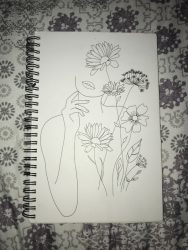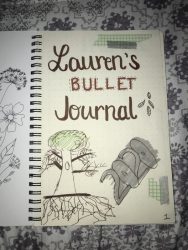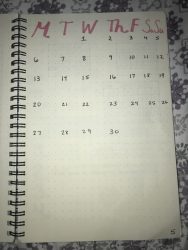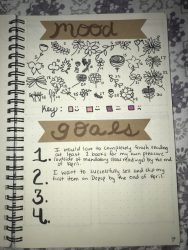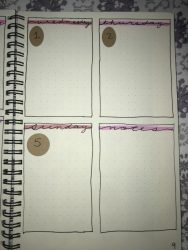Explore a world of stationery you never knew you needed in your life with News Editor, Lauren Kahme.
My ex-boyfriend from my freshman year of high school once told me that I could never just “like” something; I became obsessed with it. I remember being offended, but now I am grateful he said that. I try to use my obsessive nature as a strength, like a tool to manipulate my brain into focusing on one assignment, project, or interest.
My current quarantine obsession is bullet journaling, a system meant to help you “track the past, organize the present, and plan for the future,” according to the title of Ryder Carroll’s book on the bullet journal methodology. I am still very new to the entire process of designing and using my bullet journal (BuJo for short), but here, I present to you the bits of advice I can offer from my limited experience and extensive research over the past few weeks.
1. Get into the BuJo scene by watching Youtube videos…
Watching Youtube videos, browsing Instagram, or combing through Pinterest can offer the beginner’s eye a very necessary view of what bullet journaling could be. A beginner gains inspiration from these platforms, and you may find watching BuJo videos to be relaxing or satisfying.
2. …but try not to expect yours to come out so professionally (at least at first).
It takes enormous mental strength to not set your standards at the level of the videos you watch or pictures you see. We expect our journals to have a certain caliber of creativity and skill infused into them, simply because we give our journals the title of “bullet journal.” The hard truth (that I am just coming around to accepting) is that it takes time and patience to cultivate the artistic skill and aesthetic intuition to make our journals as “perfect” as the ones we see going viral on social media.
3. Use supplies you may already have!
I seriously lucked out because my mother used to invest her time and money into scrapbooking. We have tons of stickers, tools, and patterned paper that could potentially transition well from scrapbooking to bullet journaling. However, if you don’t have an ex-scrapbooking mom, there are still supplies that you will probably already possess! Colored pencils are useful, Crayola Super Tips markers are a BuJo community favorite, and even having a ruler, scissors, and glue can help you begin the bullet journal journey.
4. Perfectionist thoughts need to be removed from your mind and boxed for storage.
I completely understand why it may be intimidating to start a bullet journal. It took me two weeks of just staring at the cover to finally open it up and begin to write. Not every line or drawing will be perfect, and that is more than okay. Learning to accept the flaws of your journal can alleviate unnecessary stress or pressure with the need to make your journal “perfect.” Bullet journaling is meant to be a creative haven, not a perfectionist nightmare.
5. Use it in a way that’s actually productive for you.
Maybe seven pages of doodles and intricate spreads are not what you truly need to stay organized in your life. The best part about bullet journaling is that each journal is uniquely its own, and every journaler’s choice is customizable to their lifestyle. It’s hard to resist including every page or spread idea that derives from the BuJo “experts” of the internet, but it would be a waste of time and effort to include pages that you don’t use. That being said, it takes time to develop a sense of what works for you and what doesn’t; we will discover our bullet journal selves all in due time.
Below are the images of my first ever bullet journal spreads. She’s imperfect and functional; I wouldn’t want it any other way.
bullet journal via Wikimedia Commons


 0 Comments
0 Comments